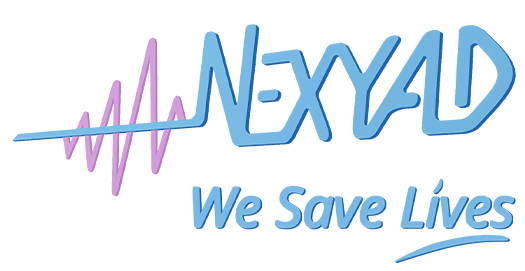St Germain en Laye, January 9th 2025.
The future of AI, particularly the integration of knowledge-based systems (KBS) and deep learning (DL), promises to be a rich, transformative area, combining structured, human-readable knowledge with data-driven, pattern recognition techniques. This hybrid approach leverages the strengths of both paradigms, fostering more robust, explainable, and adaptable AI systems. Some key trends and projects shaping the future of this intersection include:
Neural-Symbolic AI
Neural-symbolic systems are designed to integrate deep learning’s pattern recognition capabilities with knowledge-based reasoning. These systems aim to combine the representational power of symbolic logic (as seen in KBS) with the learning flexibility of neural networks. Key areas of development include:
- Knowledge-Enhanced Models: Deep learning models, such as transformers, being enhanced with explicit knowledge representations, like ontologies or relational databases, for better understanding and reasoning.
- Explainability & Interpretability: By adding symbolic structures to neural networks, these systems offer clearer reasoning paths, making AI decisions more understandable and transparent.
- Projects:
-
- DeepMind’s Neuro-Symbolic AI: DeepMind has worked on combining neural networks with symbolic reasoning to build AI that can reason about the world in a more human-like manner.
- IBM’s Neural-Symbolic Learning and Reasoning: IBM is exploring combining deep learning and knowledge graphs to create systems that can learn and reason in complex environments.
Knowledge Graphs and Deep Learning
Knowledge graphs (KGs) are a form of knowledge-based system where data is represented as entities and the relationships between them. Deep learning models are increasingly being used to enhance KGs for tasks like semantic search, natural language understanding, and reasoning.
- Hybrid Systems: Using deep learning to process unstructured data (text, images, etc.) and knowledge graphs to provide contextual understanding, AI systems can better simulate human knowledge and reasoning.
- Trends:
- Graph Neural Networks (GNNs): GNNs are gaining traction as a way to incorporate graph-based data structures (such as KGs) into deep learning models, enabling systems to make more informed predictions and reasoning.
- Knowledge-Augmented NLP Models: Models like GPT-3 and BERT can integrate KGs to improve comprehension, context understanding, and decision-making in natural language processing tasks.
- Projects:
- Google’s Knowledge Graph: Google is heavily investing in combining deep learning with its knowledge graph for more accurate search results and enhanced AI systems.
- Facebook’s Knowledge Graph-Based AI: Facebook is integrating deep learning with knowledge graphs to improve its recommendation systems and knowledge retrieval.
Cognitive Architectures
Cognitive architectures attempt to simulate the human brain’s way of processing information by integrating various AI components, including KBS and deep learning. These architectures aim to model reasoning, learning, memory, and perception in a unified system.
- Trends:
- Memory-Augmented Neural Networks (MANNs): These models integrate memory networks with deep learning to help machines retain and recall previous experiences or data, enhancing their decision-making and reasoning abilities.
- Cognitive AI for Autonomous Systems: This trend is driving the development of cognitive agents capable of interacting with complex environments in a human-like manner by leveraging both structured knowledge and experience.
- Projects:
- ACT-R: A cognitive architecture designed for modeling human cognition, which combines symbolic and sub-symbolic processing. There is growing interest in applying this model to AI.
- DARPA’s AI Exploration on Cognitive Architectures: The U.S. Department of Defense’s DARPA is investing in developing cognitive systems that combine symbolic reasoning with deep learning for military applications.
Multimodal AI
Multimodal AI is an emerging field that combines multiple types of data (text, images, video, sound, etc.) to create richer, more nuanced AI models. The fusion of KBS and deep learning in multimodal systems allows for advanced reasoning across different types of information.
- Trends:
- Vision-Language Models: Models like CLIP (Contrastive Language-Image Pretraining) and DALL-E from OpenAI combine vision and language for better contextual understanding, using deep learning and knowledge-based cues to improve image generation or text-to-image understanding.
- Cross-Modal Retrieval: AI systems will be able to retrieve and reason across text, audio, and visual data using both deep learning and knowledge graphs for richer interaction and analysis.
- Projects:
- OpenAI’s CLIP and DALL-E: Both are leading multimodal systems using deep learning and knowledge concepts to generate images from text descriptions or perform cross-modal understanding tasks.
- Google’s Multimodal AI (Pathways): Google’s Pathways model aims to combine various AI capabilities, like language understanding and visual processing, in a unified system.
AI for Scientific Discovery
The hybrid approach of KBS and deep learning is being increasingly applied in domains like healthcare, drug discovery, and materials science, where vast amounts of structured and unstructured data need to be processed and understood.
- Trends:
- AI-Assisted Drug Discovery: Combining knowledge about biological processes with deep learning-based prediction models to accelerate the design of new drugs.
- Simulations and Forecasting: Knowledge-based systems are being integrated with machine learning to model complex systems (like climate change, economic trends, or epidemic outbreaks) with better accuracy.
- Projects:
- Insilico Medicine: This company is applying AI and deep learning techniques to drug discovery, leveraging structured biological data and deep neural networks for predictions.
- DeepMind’s AlphaFold: Using deep learning to predict protein folding, which represents a knowledge-based integration between biology and computational methods.
Ethics, Governance, and Fairness in AI
With the increased complexity of AI systems combining deep learning and knowledge-based approaches, there is a growing need for ethical frameworks and governance mechanisms to ensure fairness, transparency, and accountability.
- Trends:
- Explainable AI (XAI): There is a growing interest in developing explainable AI models that combine deep learning’s predictive power with knowledge-based systems’ transparency.
- Fairness and Bias Mitigation: Research into ensuring that AI models built from both structured and unstructured knowledge are fair, unbiased, and ethical.
- Projects:
- Microsoft’s Fairness and Transparency in AI: Microsoft is working on techniques to ensure that AI models built with deep learning and knowledge graphs adhere to ethical standards.
- AI Ethics and Governance: Governments and organizations like the European Union are setting up frameworks for AI development that emphasize transparency, fairness, and accountability.
In conclusion, the future of AI, where knowledge-based systems and deep learning converge, is poised to enhance many aspects of our world, from healthcare to autonomous systems to scientific research. With the hybridization of these fields, AI is becoming more adaptable, explainable, and intelligent, creating more human-like systems that combine the strengths of both structured knowledge and deep learning. Key trends to follow include neural-symbolic integration, multimodal AI, and ethical considerations, with projects in drug discovery, cognitive architectures, and AI fairness paving the way for the next wave of AI innovation.

#ArtificialIntelligence #DeepLearning #KnowledgeBasedSystems #NeuralSymbolicAI #CognitiveArchitecture #AIForScience #ExplainableAI #MultimodalAI #EthicalAI #Nexyad #KnowledgeGraphs
















